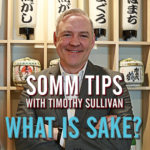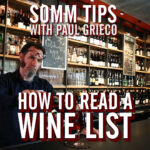Maybe you’ve heard this term before: méthode champenoise. Sometimes called méthode traditionelle or méthode classique, this process is the key to understanding how sparkling wine gets its bubbles. On today’s Somm Tips, we’ve enlisted the help of Champagne winemaker Fabrice Pouillon of Champagne R.POUILLON & Fils to explain the unique process of making Champagne.
When we visited Fabrice in Champagne, he was deep in the process of bottling, the third step after harvest is complete. He was joined by two students from a nearby school for viticulture, each taking a key part in an assembly line of wine bottling. What happens after bottling is the key to méthode champenoise: Yeasts and sugars react with vinified wine, creating c02 which has no place to escape because of the tight seal on the bottle.
But we are getting ahead of ourselves. The first step to making Champagne is growing grapes. Fabrice took us into one of his vineyards to discuss the specific terroir of Champagne, which consists of chalk (it’s everywhere). He then explained step-by-step the process he has completed annually, with the help of his father, for years. Those two things – terroir and process – are some of the most important things to understand about the region of Champagne, and why the wines from there draw so much international acclaim.
This summer, Wine4Food went to the regions of Alsace and Champagne to dive into some of France’s most interesting wine regions. If you liked this video, check out our Somm Tips episode on the 7 Grapes of Alsace, or our Follow that Somm on the food and wine of Alsace.
Thanks to Fabrice Pouillon for hosting us and teaching us about méthode champenoise! If you liked this video and want to see more content about food, and wine, be sure to subscribe to our YouTube channel, Like us on Facebook, and Follow us on Instagram.



